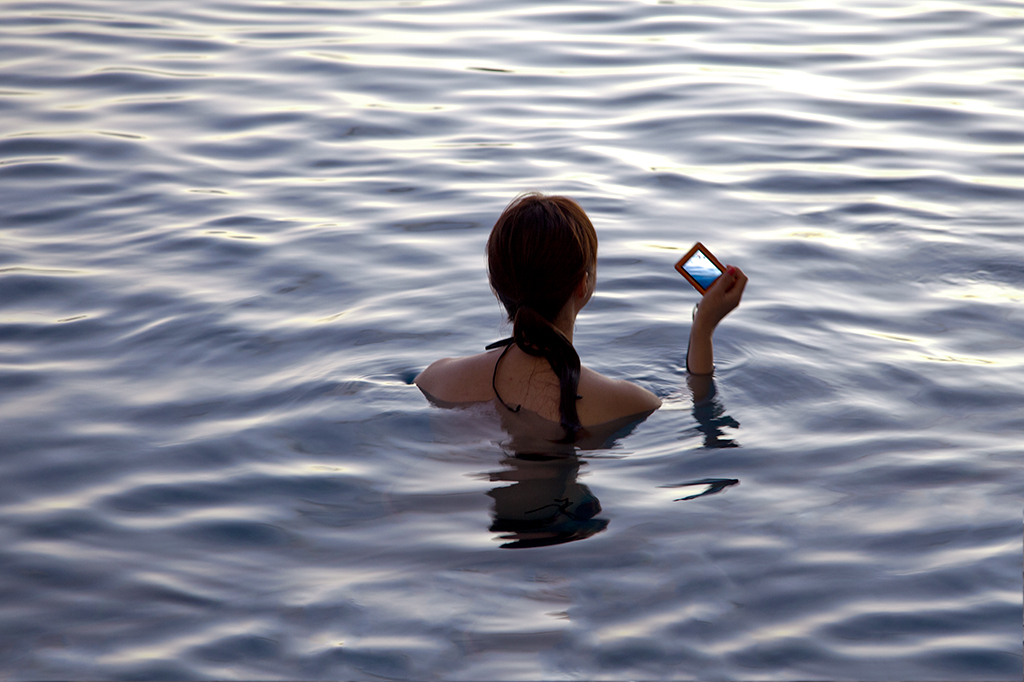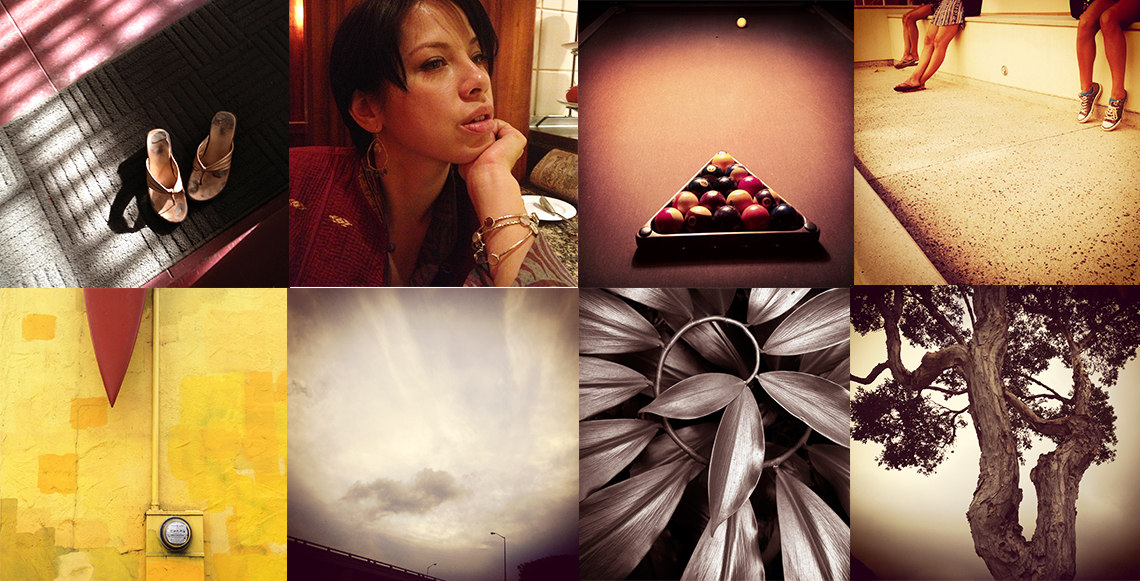Apart from the obvious social, political, and historical functions of art, how does it serve the maker? What benefits are available from the practice of making something? Now, please remember, all of you are artists in some way or in some fashion — or can be. Many of you carry cell phones or have laptops or writing implements and voices that can sing as wells bodies that can move. Many of you take photographs — lots of them. Photography is the dominant medium of the twenty-first century. We’ve become a visual culture and photography is a powerful form of visual expression, available to everyone. Most people have cameras, and anyone can learn to ignite creativity and rouse deep perception through photography.
Each of you is likely to have poised in your pocket a highly advanced camera, ready to take a photograph at a moment’s notice anywhere you may find yourself. These devices are capable of taking vibrant, well-algorithmed photographs in all but the most severe lighting situations or extreme conditions. Digital cameras, especially those embedded in smartphones, have revolutionized the way we approach the world and interact with others. No experience is complete, no meal is finished, and no gesture of friendship is consummated until we have taken a picture. The photograph proves I was here: I witnessed this event, met this person, or relished this experience. Images proliferate and our identity is often shaped by the way we see ourselves and communicate through pictures. In a very real sense, the camera confirms the “I am” of existing and being in this world.
You could say the same about the paintbrush, the pen, or the guitar. Making something is not only deeply satisfying—we participate in the very the act of creation—but it also sparks insight and critical questioning of oneself and the world around you. You become a creator not merely a consumer.
In the De-Definition of Art, art critic Harold Rosenberg attests to the power of artistic expression.
“… The individual arts, in whatever condition they have assumed under pressure of cultural change and the actions of individual artists, have never been more indispensable to both the individual and the society than they are today. With its accumulated insights, its disciplines, its inner conflicts, painting (or poetry, or music) provide a means for the active self-development of individuals—perhaps the only means. Given the patterns in which mass behavior, including mass education, is presently organized, art is the one vocation that keeps a space open for the individual to realize himself in knowing himself. A society that lacks the presence of self-developing individuals—but in which passive people are acted upon by their environment—hardly deserves to be called a human society. It is the greatness of art that it does not permit us to forget this.”
What can we learn through the act of making? Whether you are taking photos with a cell phone camera or writing the great American novel, what are the benefits for the maker?
First, we come to grips with what is found within our own mind – both its surface glitters and its resounding depths. In Zen tradition, practitioners make a distinction between the thinking mind and the observing mind — the mind’s witness. The mind, in other words, can observe itself. The mind is associative, constantly making connections to past experiences, previous understandings, and its backlog of impressions from direct perception. Further, contemporary psychology teachers that 75-80% (at least) of the mind’s contents are unconscious, usually unavailable to conscious reasoning.
Bob Dylan writes, in Maggie’s Farm, “I’ve got a head full of ideas that is drivin’ me insane.” To observe the wide-ranging contents of our own mind, we often need help. Art can offer direct assistance. Keeping a daily journal of thoughts and impressions, writing freely, can help shake loose the wild mind. Often I find with free writing, or merely in airing my own thoughts out loud, insights and realizations come tumbling out that I was not previously aware of. I find this to happen often in responding to student questions or critiquing student work. Similarly, taking photographs daily of everything the strikes your fancy can uncover your sympathies, antipathies, your unconscious complexes expressed in metaphor and symbol, as well as the seeds of your genuine being.
Try it. Write or photograph daily for a month or two and observe the stream of consciousness found in those activities. Do not edit and do not judge what arises. Over time, you will find patterns and connections and understandings previously unavailable to the surface mind.
Second, we see how we see. In photography classes, I am struck by how little contemporary individuals know about their own unique vision — how they see the world. Photography and art engender a deep perception of both self and world. Our capacity for observation is strengthened and stimulated. What we choose to pay attention to, what features of the world rise to the top of our awareness becomes a tool for self-knowledge. Further, the inner landscape and the outer landscape come into accord. We see what we are. Photographer Frederick Sommer describes the activity of a seeing as: “…walking about the world searching for something we carry within ourselves. Consequently, we would never photograph anything unless we have become attentive to it because we carry a great chunk of it within ourselves.”
This enlivens the Buddhist concept of the mind as a mirror. Our unconscious speaks through the way we see and express our vision—whether through photographs, writing, sketches, or songs. Symbols, metaphors, and gestalts appear in our work time and again that attest to the unique nature of our vision. Look at your creative efforts from a period of time, months or years, and observe the recurring motifs and metaphors. You’ll learn a great deal about yourself.
Third, we can discover something of our own unique style and the shape of our potential contribution to others—our authenticity. In photography classes, I can tell by the second or third class which image belongs to which individual in the class. There is a certain emotional tone, or a particular visual dynamic, a way of handling color or form, or unique, personal metaphors that appear and reappear. It is much harder for the maker to identify these features in their work. Style is not something you attain; rather it oozes out of everything you are. Often, we can only observe these characteristics of our own work in the context of other people. How are we different? What is unique about my expression and how does it differ from yours?
The work here is one of comparing and contrasting. Through acknowledging our differences, we can also discover something of our essential being.
And finally, through creative work we contribute to the dialogue of our times. We learn to engender tolerance, embrace ambiguity, and encourage critical thinking as well as an openness to opposing ideas. We examine ourselves within the times in which we live. All creative expression is a complex relationship between culture and ourselves. We cannot divorce ourselves from others, those with whom we communicate, nor can we ignore the complex influences that arise from social conditions, our own unique background, and our relatedness with others. What can we offer that grows directly from our own being, our own hard won experiences, and our unique, individual way of seeing the world. Each of us is highly unique and the world would be a different place without our involvement and engagement.
Rosanne Somerson, President of Rhode Island School of Design (my alma mater for Graduate school), writes a moving tribute on the benefits of an involvement in the arts, in The Art of Critical Making: “At RISD we develop curricular models through which innovation and originality are coaxed, rendered, and challenged, leading to heightened expression and new ways of thinking. We cultivate intense personal development, deep disciplinary expertise, rigorous skill-building, advanced conceptual reasoning, and attention to both process and execution. We are committed to fostering creative and critical thinkers who innovate with ease, who are not rattled by uncertainty, who move agilely from one form of output to another, and who can communicate in multiple ways with acuity and clarity. We believe that these traits are effective remedies for crumbling systems and structures that no longer work. As educational systems propel us further and further away from physical, tangible experience, how better might learning support nimble, innovative, and imaginative thinking than through models that emphasize the iterative formation of ideas through making? Contemporary times call for contemporary thinkers and makers.”


